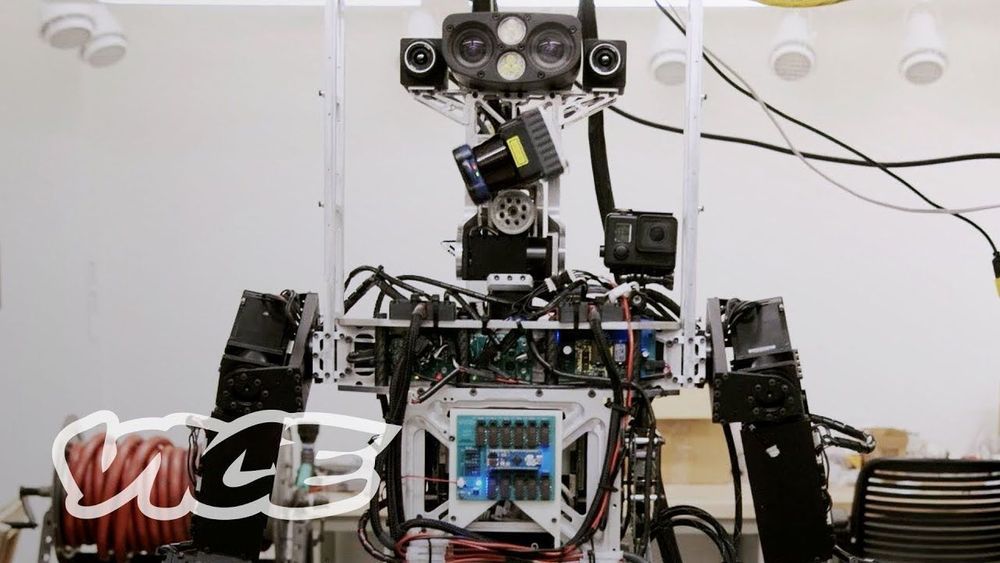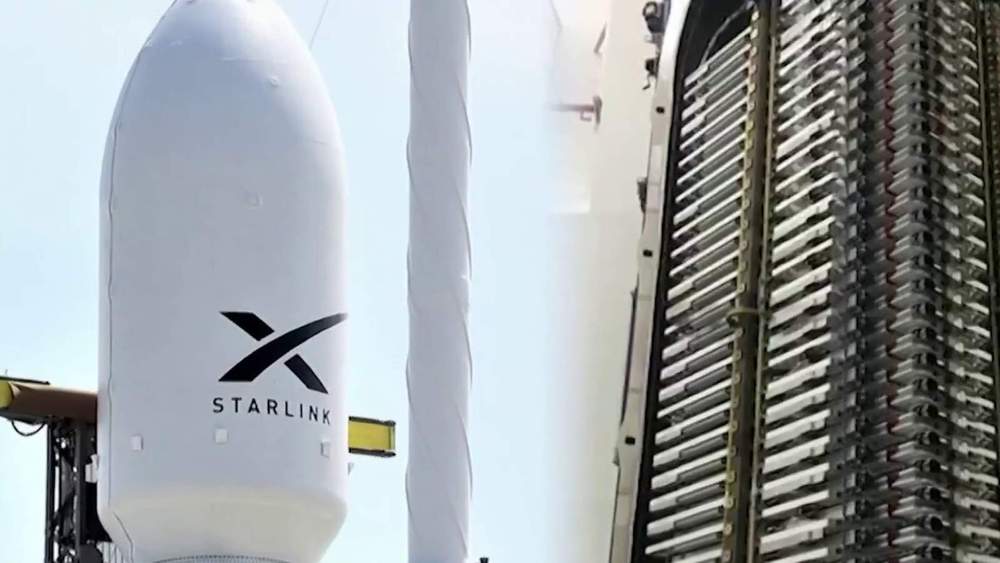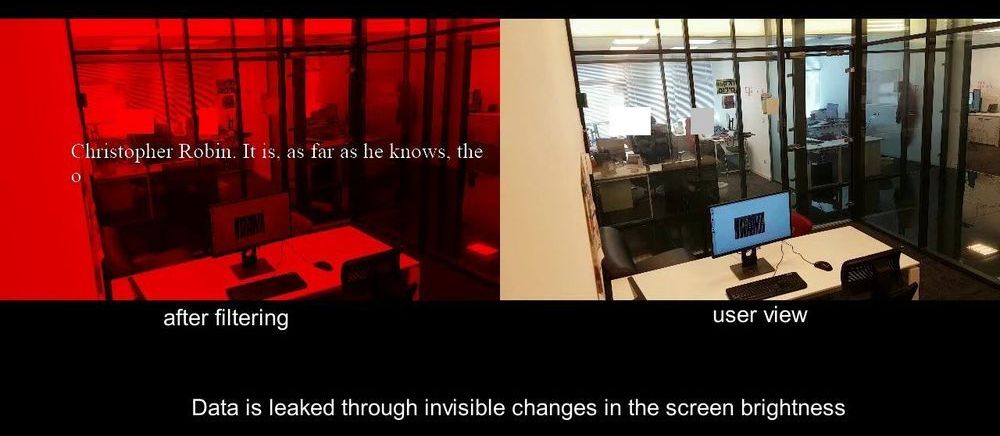A SpaceX Falcon 9 rocket launched 60 new Starlink internet satellites into orbit Monday (Feb. 17), but missed a landmark booster landing at sea.
Category: internet – Page 227
VICE gained exclusive access to a small fleet of US Army bomb disposal robots—the same platforms the military has weaponized—and to a pair of DARPA’s six-foot-tall bipedal humanoid robots. We also meet Nobel Peace Prize winner Jody Williams, renowned physicist Max Tegmark, and others who grapple with the specter of artificial intelligence, killer robots, and a technological precedent forged in the atomic age. It’s a story about the evolving relationship between humans and robots, and what AI in machines bodes for the future of war and the human race.
About VICE:
The Definitive Guide To Enlightening Information. From every corner of the planet, our immersive, caustic, ground-breaking and often bizarre stories have changed the way people think about culture, crime, art, parties, fashion, protest, the internet and other subjects that don’t even have names yet. Browse the growing library and discover corners of the world you never knew existed. Welcome to VICE.
Connect with VICE:
Check out our full video catalog: http://bit.ly/VICE-Videos
Videos, daily editorial and more: http://vice.com
More videos from the VICE network: https://www.fb.com/vicevideo
Like VICE on Facebook: http://fb.com/vice
Follow VICE on Twitter: http://twitter.com/vice
Follow us on Instagram: http://instagram.com/vice
The VICE YouTube Network:
VICE: https://www.youtube.com/VICE
MUNCHIES: https://www.youtube.com/MUNCHIES
VICE News: https://www.youtube.com/VICENews
VICELAND: https://www.youtube.com/VICELANDTV
Broadly: https://www.youtube.com/Broadly
Noisey: https://www.youtube.com/Noisey
Motherboard: https://www.youtube.com/MotherboardTV
VICE Sports: https://www.youtube.com/NOC
i-D: https://www.youtube.com/iDmagazine
Waypoint: https://www.youtube.com/Waypoint
A team of researchers affiliated with several institutions in China has succeeded in sending entangled quantum memories over a 50-kilometer coiled fiber cable. In their paper published in the journal Nature, the group describes several experiments they conducted involving entangling quantum memory over long distances, the challenges they overcame, and problems still to be addressed.
Over the past several years, scientists have been working toward the development of a quantum internet—one very much the same as the present-day network, but with much stronger security. One such approach is based on the development of quantum keys that would allow parties to a private conversation to know that an interloper is eavesdropping, because doing so would change the state of the keys. But in such systems, measurements of the quantum state of the keys is required, which can be impacted by environmental conditions, making the approach nearly impractical.
Another approach involves using entangled particles to form a network—but this has proven to be difficult to implement because of the sensitivity of such particles and their short lifespan. But progress is being made. In this new effort, the researchers in China succeeded in entangling quantum memory between buildings 20 kilometers apart and across 50 kilometers of coiled cable in their lab.
CAPE CANAVERAL, Fla. – If you missed the last few Space Coast launches because they happened late at night or during the workday, this weekend’s SpaceX launch will be a good opportunity to see one.
SpaceX is targeting Saturday morning to launch another round of internet-beaming satellites on a Falcon 9 rocket from Cape Canaveral Air Force Station Launch Complex 40.
The launch window opens at 10:46 a.m. and ends at 11:02 a.m.
The rapidly falling cost of getting into orbit has spurred a boom in the space industry as a host of new applications become economical. Now a secretive startup plans to slash the cost to just $250,000 by flinging rockets into space rather than firing them.
Over the last decade, the pioneering work done by SpaceX has shown that getting stuff into orbit doesn’t need to be so expensive and that there are viable business opportunities to be had in the private space industry. Combined with advances in satellite technology, there’s now a thriving market for small, inexpensive spacecraft in low- E arth orbit doing everything from remote sensing to delivering broadband internet access.
But while costs have fallen dramatically, the cheapest option for reaching low-Earth orbit —a rideshare on SpaceX’s Falcon 9—still starts at $1 million, and launches only happen twice a month at best. California-based startup SpinLaunch says its technology will allow up to five launches a day for as little as $250,000.
Researchers were able to demonstrate ‘spooky’ process happening at much bigger distances than ever before.
Last week, U.S. Senator Richard Blumenthal grilled wireless industry representatives, who admitted the industry has done ZERO health & safety studies on 5G technology. Meanwhile, dozens of independent studies indicates that 5G is a risk to all biological life. Watch the video above, on YouTube here, or on Facebook here.
Several state attorneys general had argued that combining the No. 3 and No. 4 carriers would limit competition and result in higher prices for consumers.
Sprint and T-Mobile say their merger will help them compete against top players AT&T and Verizon, and advance efforts to build a nationwide 5G network. Andrew Harrer / Bloomberg via Getty Images file.
Data can be stolen from an air gapped personal computer just by using variations in screen brightness. Researchers at Ben-Gurion University wrote a paper on it.
As the team defines them, “Air-gapped computers are systems that are kept isolated from the Internet since they store or process sensitive information.”
That they have come up with yet another discovery on how to wrest sensitive data from a computer came as no shock to Naked Security, which recognized that “Researchers at Ben-Gurion University of the Negev have made a name for themselves figuring out how to get data out of air-gapped computers. They’ve dreamed up ways to communicate using speakers, blinking LEDs in PCs, infrared lights in surveillance cameras, and even computer fans.”









